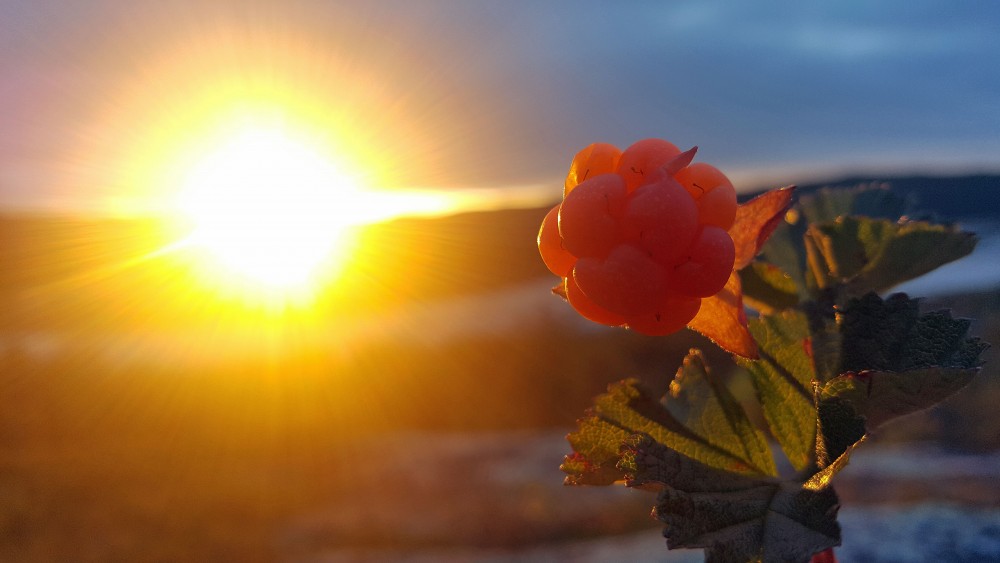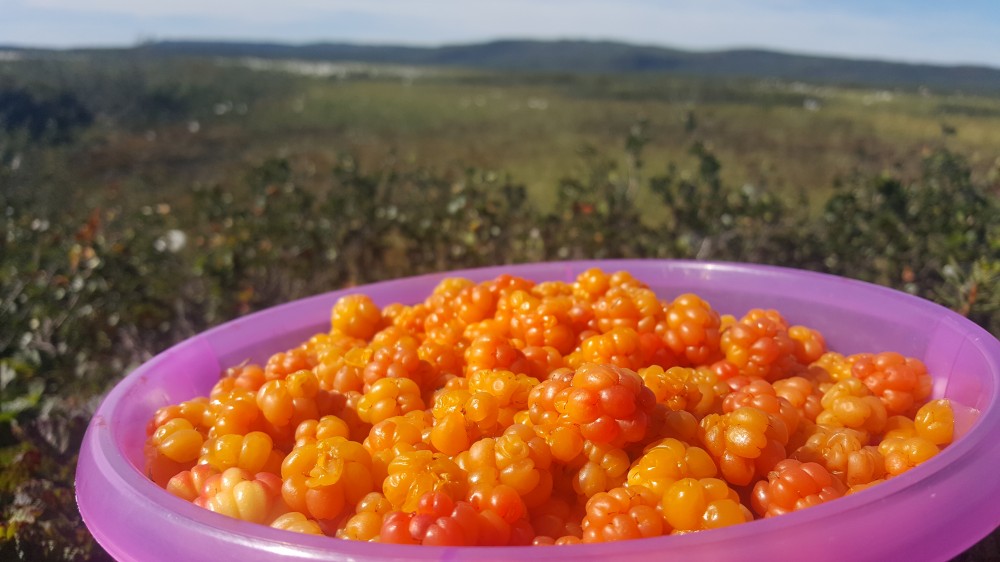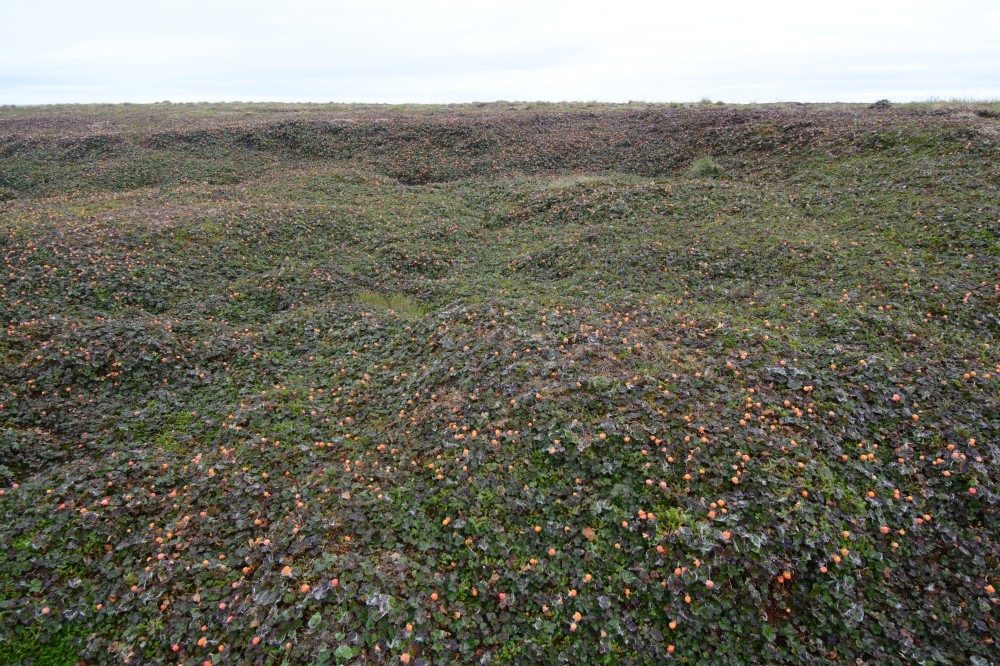Looking for ‘the gold of the Arctic’? Meet the cloudberry

Highly prized and difficult to get. Cloudberries are not only the delicious tasting magic symbol of the north, it is also some of the healthiest thing you can eat.
Cloudberries is an important part of northerners’ culture, often referred to as «The gold of the Arctic.» Growing in marshlands, boreal forest and along the coastline of northern Scandinavia Northwest-Russia and throughout the northern hemisphere, the myths about cloudberries are many.
Although 2017 seems to be a good season with many warm orange-colored marshlands north of the Arctic Circle, prices for cloudberries are surpassing all other berries on the market. Be prepared to pay at least €15 to €20 per kilogram depending on location.
A well-guarded secret

Prizes are high because they are hard to get. They are only found in the wild and you will have to walk deep into the homeland of the mosquitoes to find them. Water-proof boots and good local orientation knowledge are a must. Insight information on where to go, inherited from generation to generation, is also an advantage. Naturally, the best places to find cloudberries are kept well secret. From generation to generation.
In Finnmark, Northern Norway, one legendary story tells about an old woman who broke her leg while picking cloudberries. True or not; the story says instead of revealing the location of her swamp, she hobbled several kilometres away before her friends were allowed to call in a SAR-helicopter to take her to hospital.
Healthy Nordic tradition

By the way, did you know that a cloudberry is not a berry?
Cloudberry is technically a fruit, or more precisely a cluster of small fruits with stones.
Healthy? Yes, sure. Cloudberry contains four times as much vitamin C as an orange. It also contains kalium, zinc, magnesium and beta carotene. Health benefits are reduced risk for diabetes, helps with hormone production, improves immunity even therapeutic benefits for several common, chronic diseases like fighting cancer or reversing heart disease.
When Nordenskiöld became the first to sail the North-east Passage with the vessel «Vega», he brought cloudberries preserved in rum, because of its preventative powers had been handed down in Nordic folk medicine. His expedition became one of the few polar expeditions free of scurvy. Although Vitamin C was first identified in 1932, the knowledge of cloudberry to prevent the disease dates back to Viking area.
Also Fridtjof Nansen, setting off to find the North Pole on board «Fram» in 1893, he copied Nordenskiöld to to the extent of bringing a ton of cloudberry preserve.
Today, cloudberries are mostly made into jams, or used in tarts and deserts. Cloudberry cream is the «national desert» of northern Norway, while in Finland cloudberry are used to make tradional liqueurs such as the Lakka.
Related stories from around the North:
Canada: How two towns in the Canadian Arctic get their food, blog by Mia Bennett
Denmark/Greenland: Danish study shows healthy Nordic diet could help prevent stroke, Yle News
Finland: Finnish farming lobbies decry WWF meat guide, Yle News
Norway: Researchers voice concern about warmer Arctic waters and effects on fish, The Independent Barrents Observer
Sweden: Worst berry season in years expected in northern Sweden, Radio Sweden
United States: King salmon from Alaska’s Yukon River briefly sold for first time in years, Alaska Dispatch News



